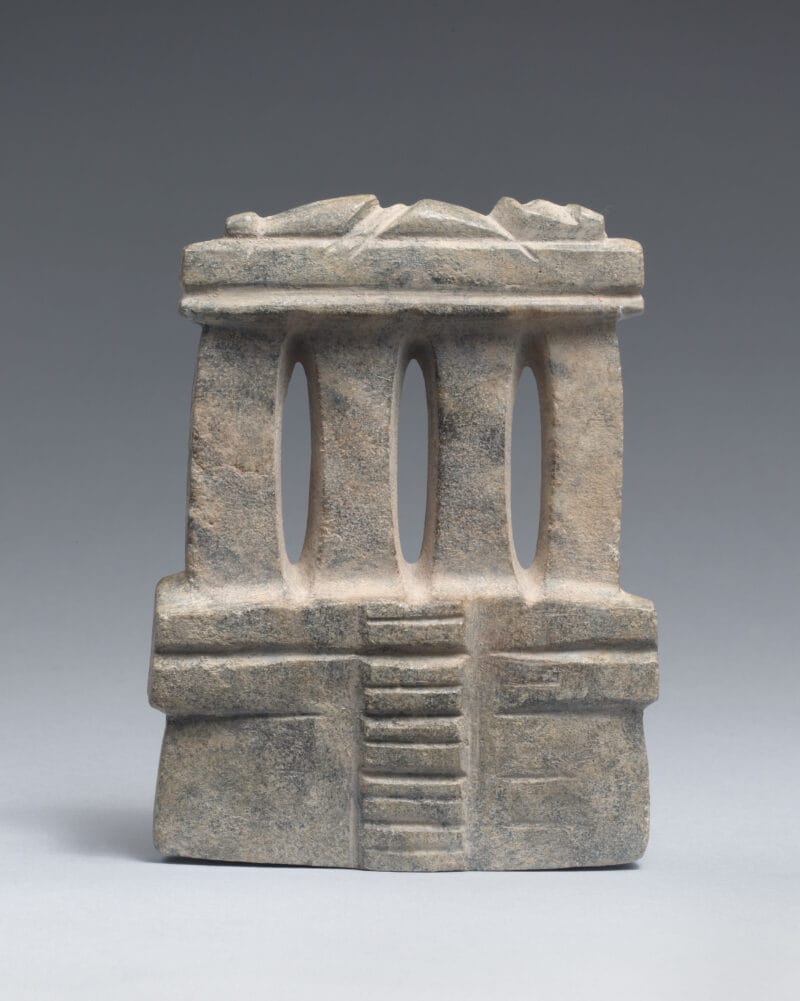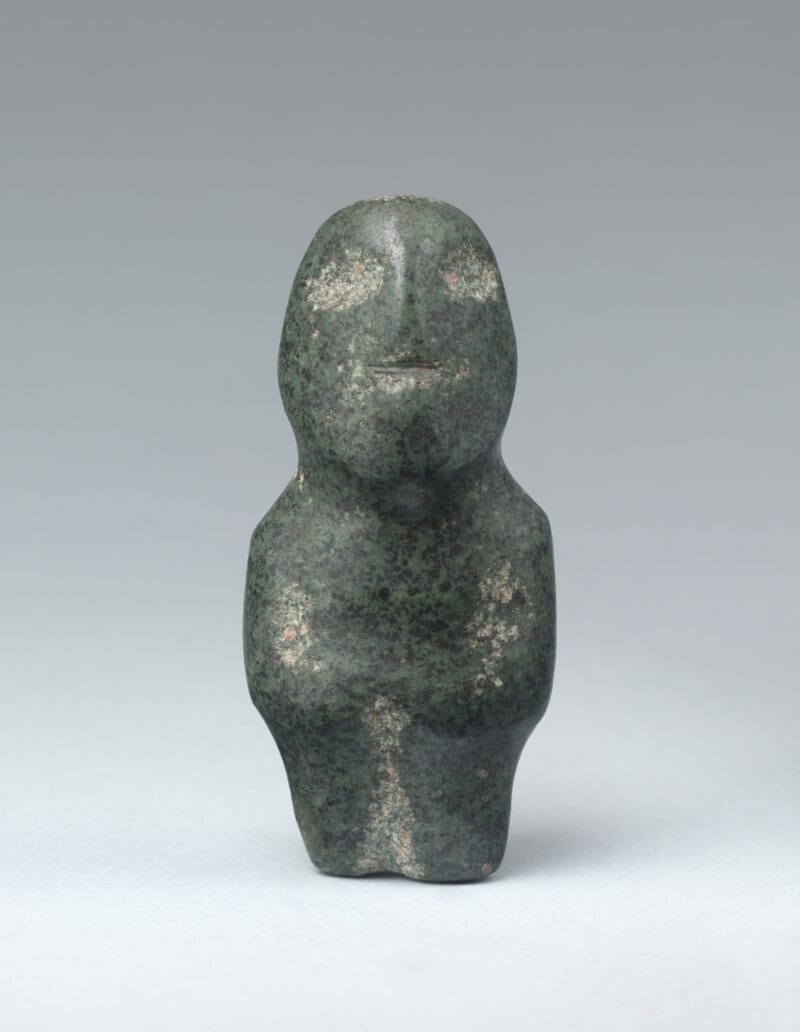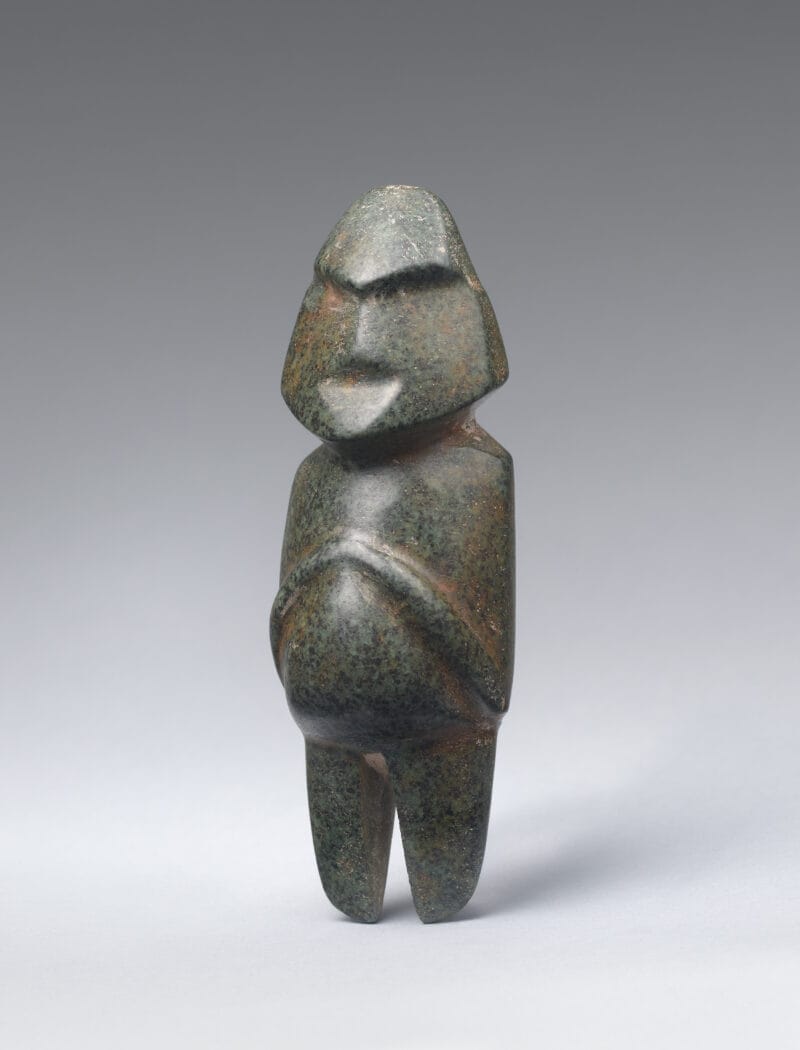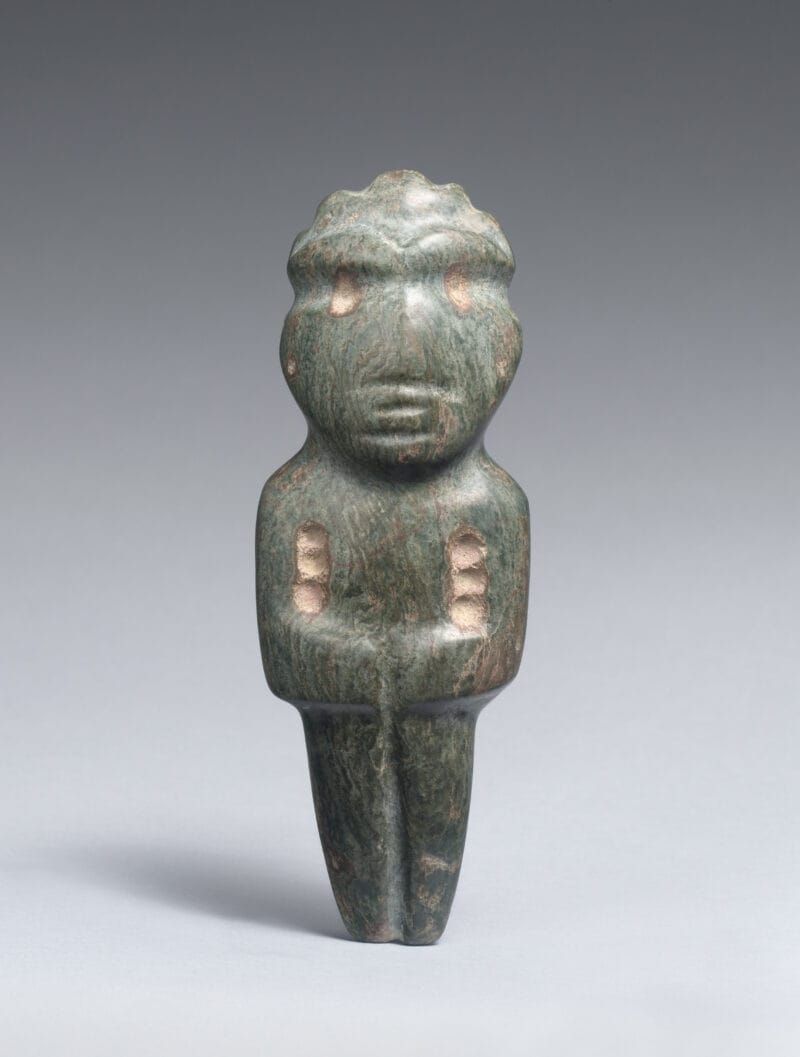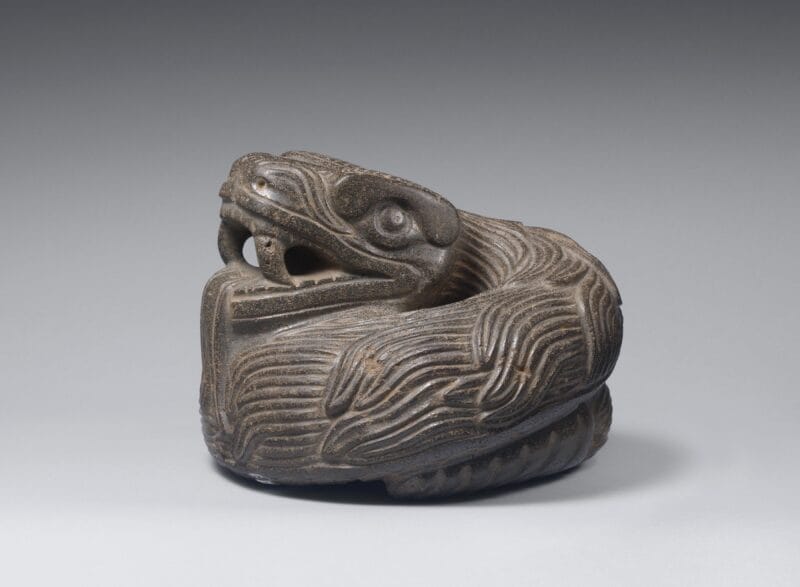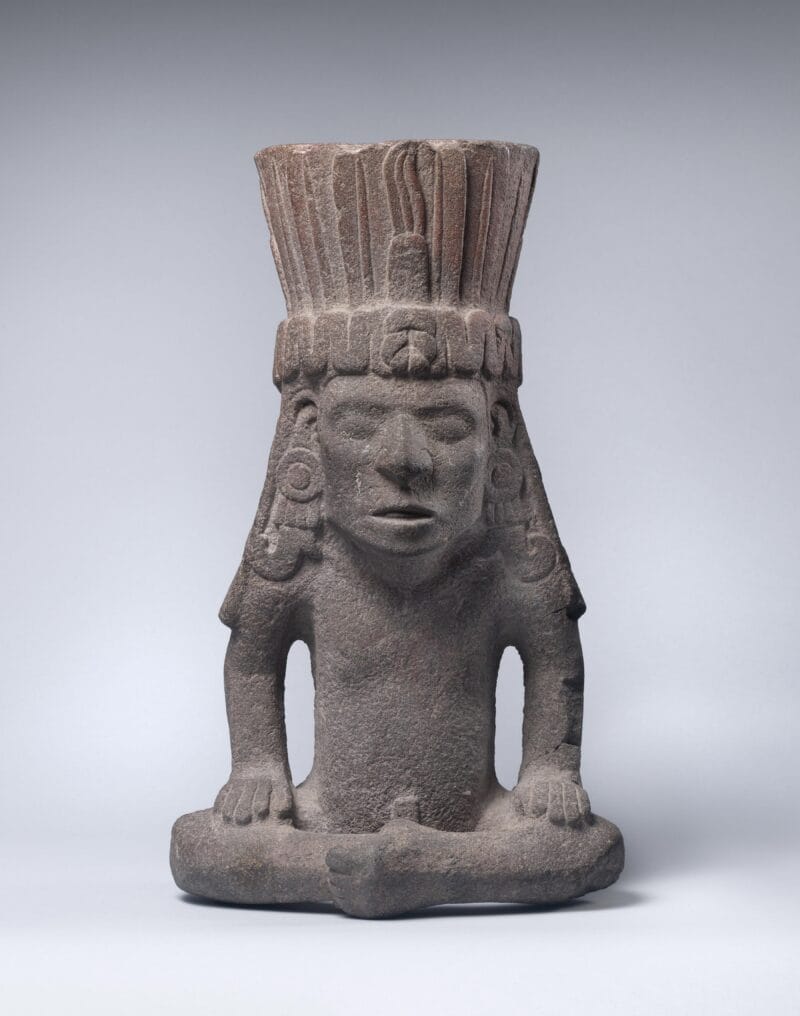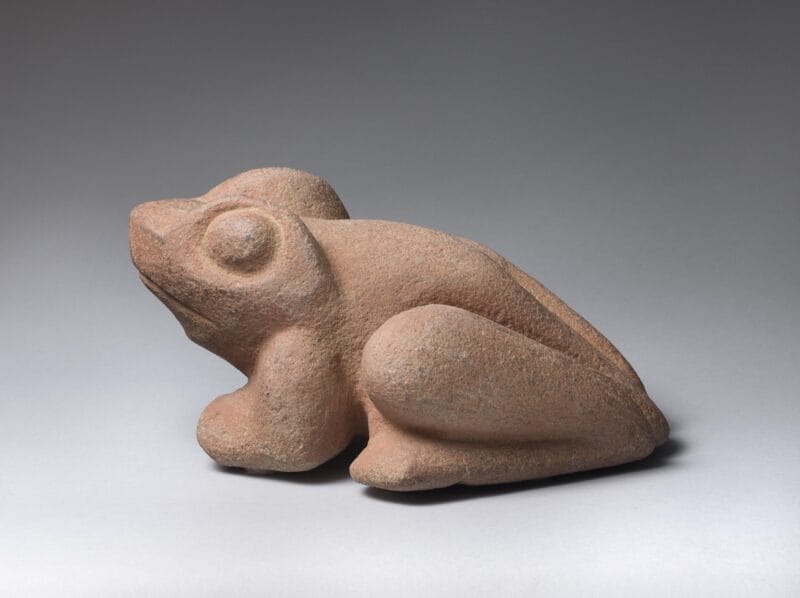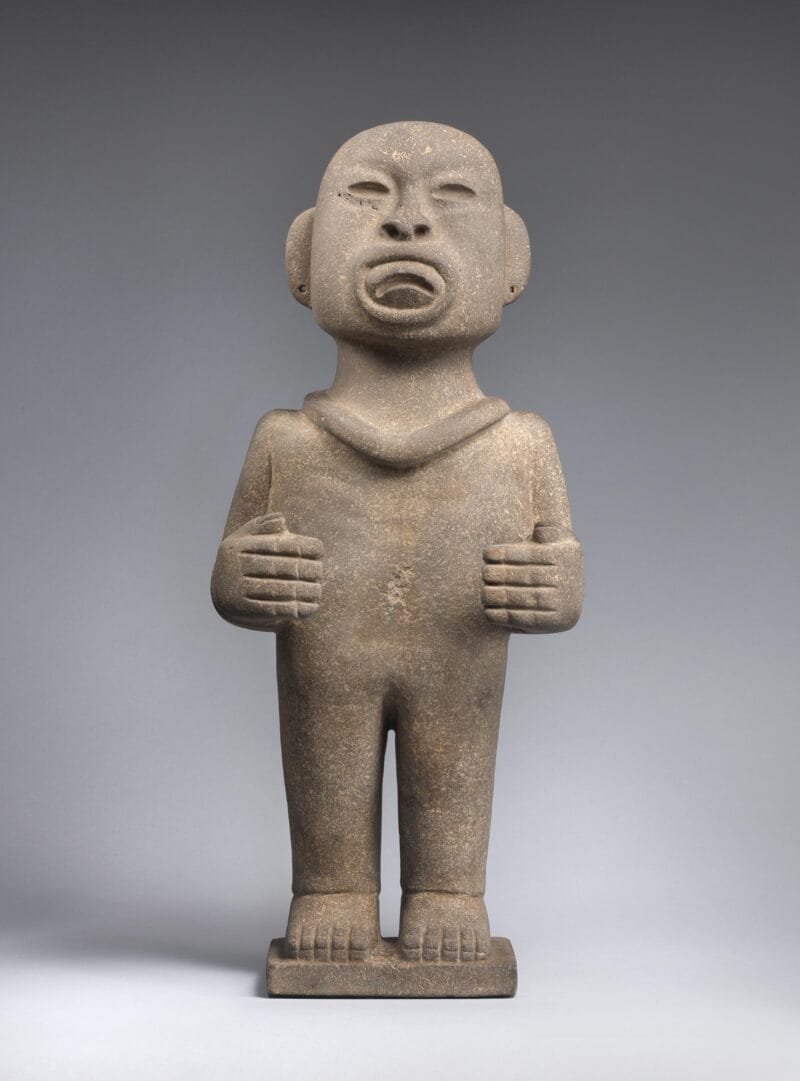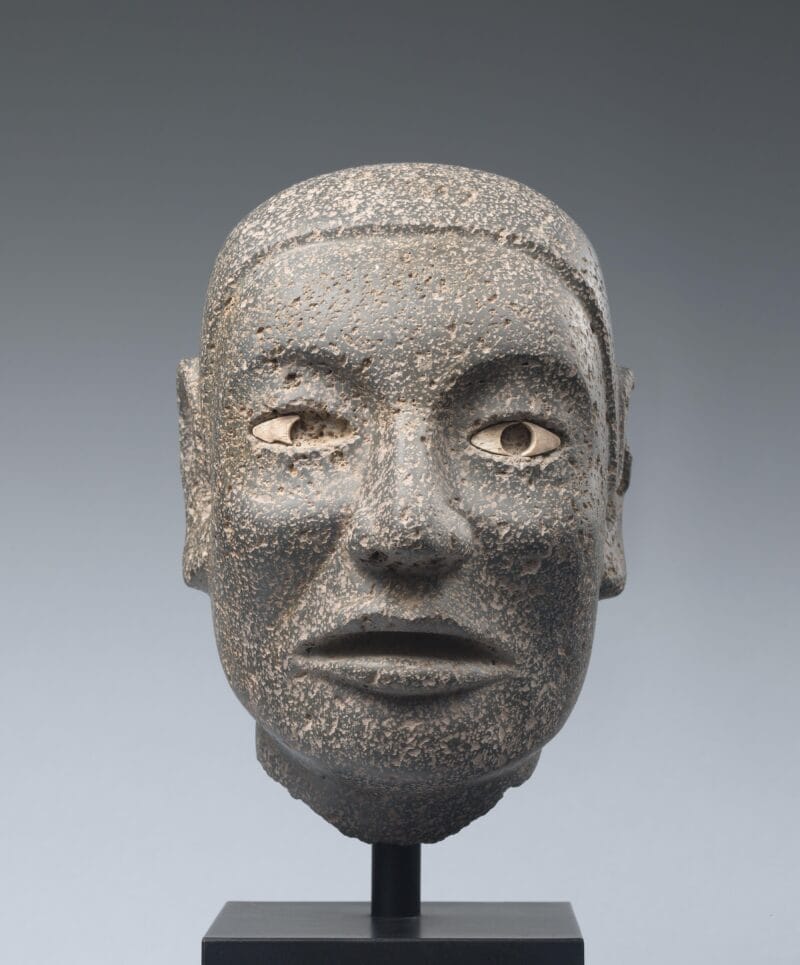
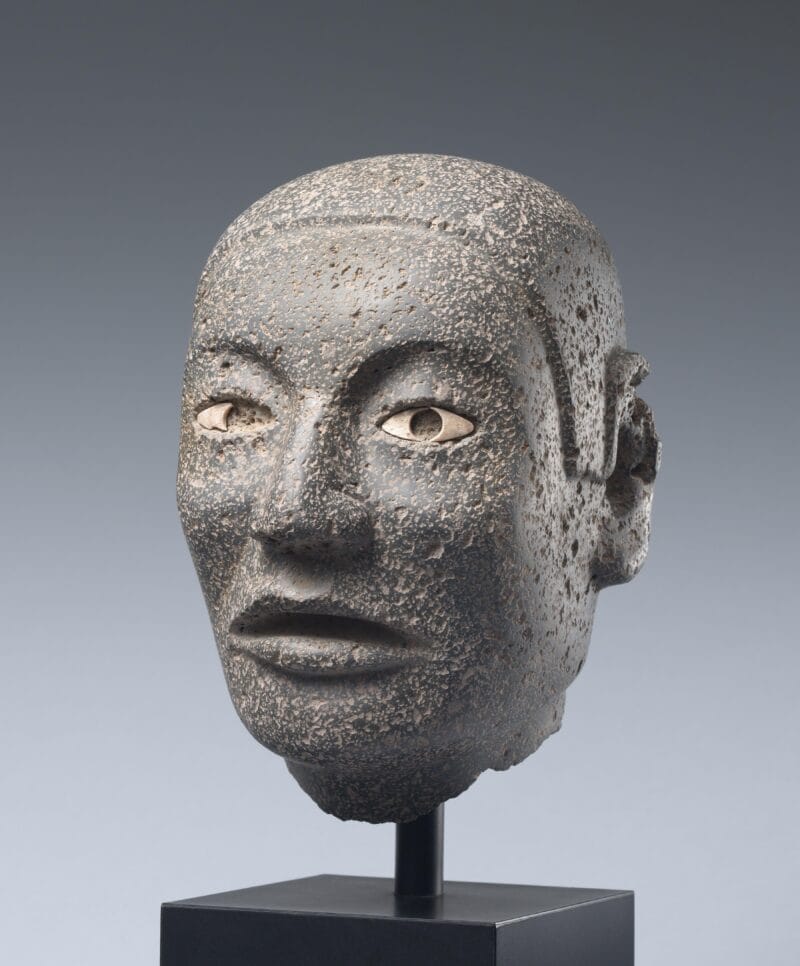
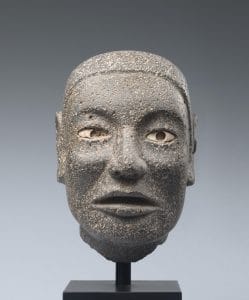
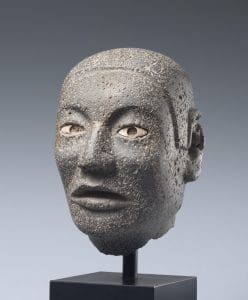
About the Object
This naturalistic head carved from basalt with inlaid shell eyes was originally part of a larger figure that unfortunately has probably been lost to time, depriving scholars of the ability to fully understand how the work would have engaged its creators. Nevertheless, the quality and precision of the piece reflect the intense level of skill and knowledge of stone that Aztec (or Mexica) and other Mesoamerican artisans had cultivated over millennia. Finally, the facial expression, inlaid shell eyes, and mouth appearing to be frozen in speech still convey a sense of the power and permanence that Mexica artists often sought to capture and transmit to their contemporaries and to future generations.
Additional Information
The site of Tenochtitlán, the Mexica capital that afforded the Mexica protection from foes, helped them to build a large empire stretching from the Gulf of Mexico to the Pacific Ocean, through a triple alliance with the Texcoco and Tlacopan peoples with whom they nominally shared power. In addition to developing complex political alliances with these peoples and others, the Mexica collected tributary taxes of goods and people that served both to enrich their central government based in Tenochtitlán and to sustain their elaborate religious rituals. These often involved human sacrifice, believed to ensure the continuity of both the universe and Mexica dominion. Such sacrifices would usually occur following important battles and during the harvest period.
[Throckmorton Fine Art, New York, NY];
The Jan T. and Marica Vilcek Collection, 2002-2010;
Gift to The Vilcek Foundation, 2010;
Smith, Roberta. “Art Review; Multifaceted Antiques Show Only Burnished by Adversity,” New York Times, January 21, 2002.
Related Objects
You may also be interested in
Spotlight Series: Transcendent Creations
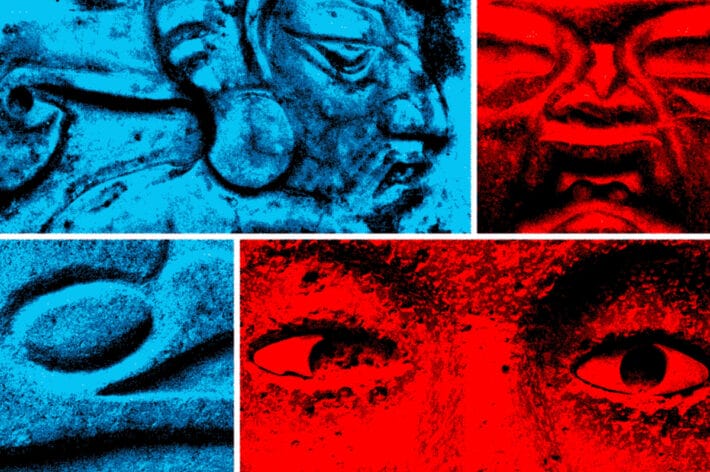
Meleko Mokgosi

